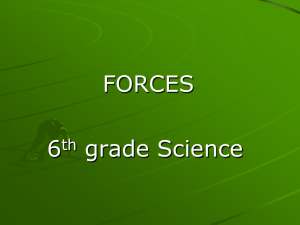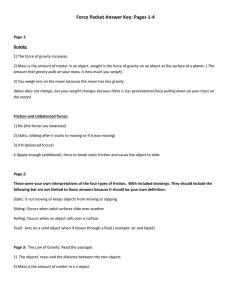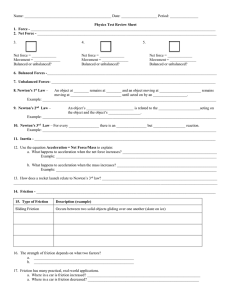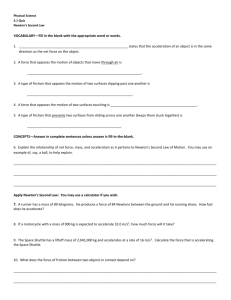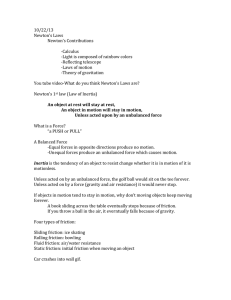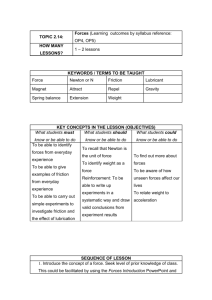Force flashcards
advertisement
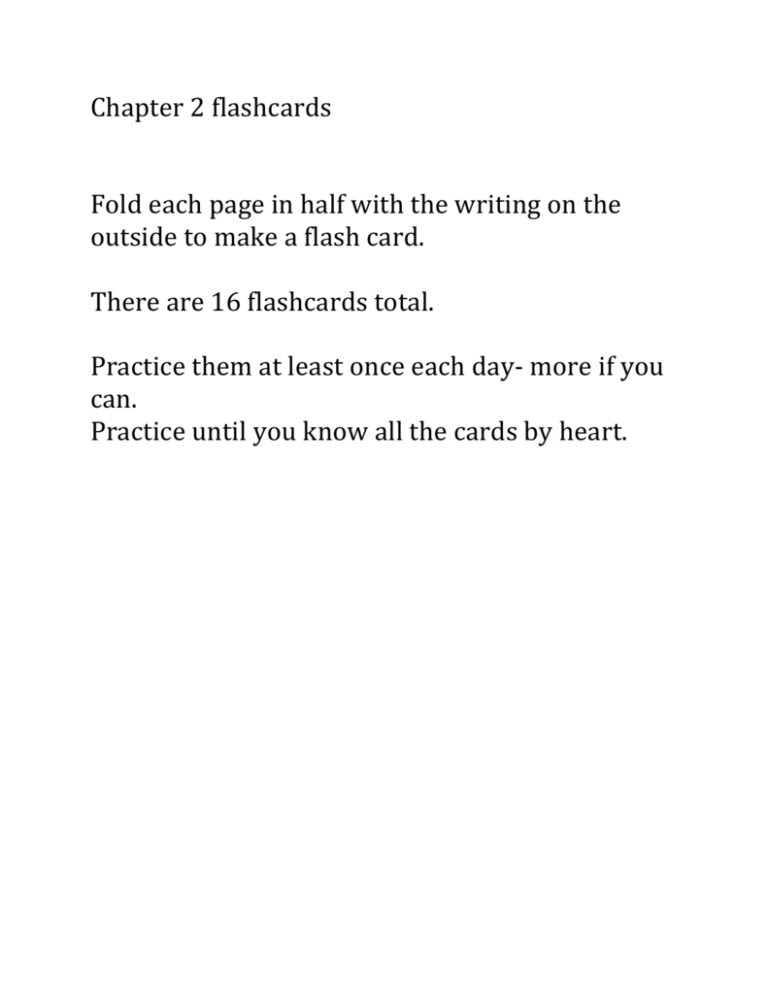
Chapter 2 flashcards Fold each page in half with the writing on the outside to make a flash card. There are 16 flashcards total. Practice them at least once each day-­‐ more if you can. Practice until you know all the cards by heart. Force A push or pull, some are contact forces (pushing a cart) and others are non-contact forces (electric force, magnetic force, gravity) Newton The unit used to measure force. Named after Isaac Newton. Net Force The combination of all the forces acting on an object, the TOTAL force on an object. Balanced Forces (what they are and what effect they have on an object’s motion) When all the forces on an object cancel each other out. Balanced forces do NOT cause a change in motion. Unbalanced Forces (what they are and what effect they have on an object’s motion) When the forces on an object are unequal. Unbalanced forces DO cause a change in motion. Unbalanced forces cause an object to accelerate (speed up, slow down, or change direction) Terminal velocity (what it is and what has to happen to the forces on an object) The top speed an object reaches when being pulled downward by gravity. It occurs when gravity and air resistance (fluid friction) equal each other. When terminal velocity is reached, acceleration is at zero. Inertia The tendency (habit) of matter to resists a change of motion. It takes an unbalanced force to cause an object to change its motion and overcome inertia. Friction (what it is, why it happens) The force that opposes motion, that resists or opposes motion. It occurs because surfaces are never completely smooth and the surfaces “catch” on each other. Ways to increase the amount of friction between surfaces 1.Increasing the force between objects increases the amount of friction 2.Increasing the surface area that is touching increases friction. 3.Changing the surface substance could increase friction. Rougher, stickier = more friction. Four types of Friction Sliding, Rolling, Fluid and Static Two factors that affect Gravity Mass of objects and Distance between objects When the mass of an object increases the gravity… increases When the distance between two objects increases the gravity… decreases Newton’s first law of motion An object in motion will stay in motion and an object at rest will stay at rest until acted upon by an unbalanced force. Newton’s second Law The acceleration of an object depends on the force applied to the object and the mass of the object. More force -= more acceleration More mass = less acceleration Newton’s third law of motion For every action there is an equal and opposite reaction. ***Action/Reaction forces do NOT act on the same object. They are not balanced forces, because they act on separate objects.***


